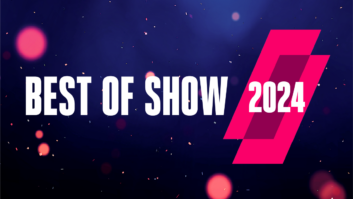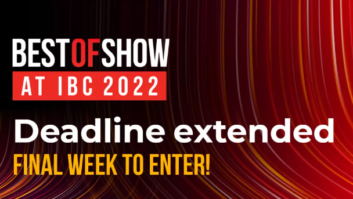
Last year, 61% of the podcast fans who responded to a survey by Discover Pods reported they spent more time listening to podcasts than watching TV. According to the company’s Podcast Trends Report 2019 that number has climbed to 66%. Also this year, 82.4% reported they listen to podcasts for more than seven hours each week.
Have you and your station or company considered podcasting as a way to reach a larger audience? How do you get a podcasting program off the ground? The Video Show, a two-day event in Washington, Dec. 4–5, 2019, will feature an entire track on the basics of podcasting.
The session “Podcast Studio Design: Necessities, Variations and Options,” presented by John Storyk, a founding partner of Walters-Storyk Design Group, is a great place to get started. He’ll discuss how the company’s expertise developed studios from the ground up for both Stitcher and Spotify’s Gimlet Media, answering the unique needs of professional podcasting.
The Video Show caught up with Storyk for just a minute ahead of the show.
The Video Show: Your presentation at The Video Show is a case study on how you designed multiple studios/production workspaces for two of the biggest names in podcasting — Stitcher and Spotify’s Gimlet Media. Is creating a facility for podcasting much different than, say, creating one for recording music?
John Storyk: Super question… in many respects, the process is identical to recording studio (content creation spaces) design. All the aspects of the process have to be addressed — programming, pre-design, schematic design development, value engineering (budget!) construction documentation, construction administration, final commissioning, etc.
Many of the acoustic issues in studio design are also the same, but some differences do exist.
- Podcasting environments are mostly associated with the spoken word. In fact, in one respect this makes things a bit easier — limited frequency range for design considerations. However, a new issue exists when creating multiple room facilities (such as Gimlet and Stitcher). The multiple podcasting rooms need to sound virtually identical. This is not always the case in small-room design for studios (i.e. multiple vocal booths). We will discuss this in more detail at the symposium in Washington.
- Typically, podcasting rooms are small and for some reason podcasting companies frequently do not allow quite enough space for all the rooms including well-isolated construction (thicker than average walls); door swings, ADA requirements; sound locks, etc.
- Podcasting rooms need to be very quiet — NC 15 is our starting point — not too different than many studios, but there is little room for negotiation here.
These are just some of the issues. Always a challenge!
The Video Show: The podcasting world is rapidly changing and maturing, as evidenced, for instance, by the fact that Spotify purchased Gimlet in the middle of your project. Did your clients find their expected needs for the studios changed during the design process?
Storyk: Not sure at all how to answer this — both Gimlet and Stitcher are in new facilities that have not been operating that long. I cannot imagine any studio that, when it opens it doors, does not see something they would like to have done a different way. We have tried to future-proof both facilities. Time will tell.
The Video Show will feature more than 100 sessions on nine presentation stages, as well as a dedicated screening room, demo areas, streaming studio and dynamic exhibit floor. Want to hear more about this topic? Visit the website to learn more and register.












